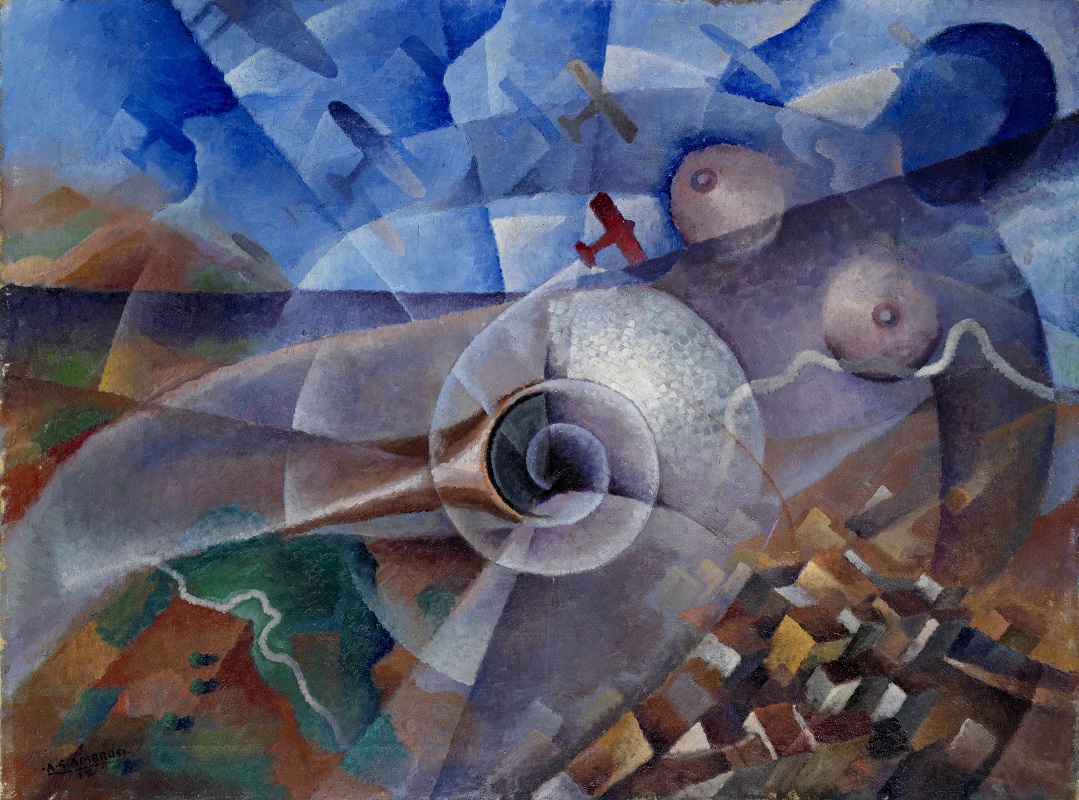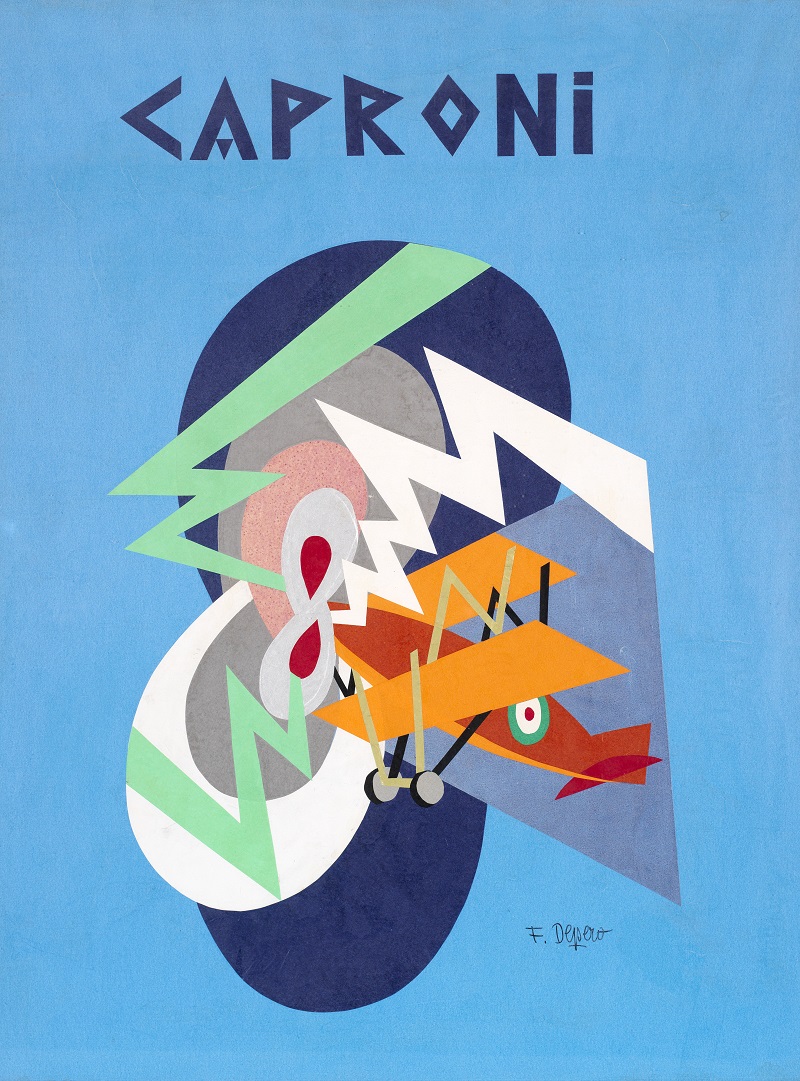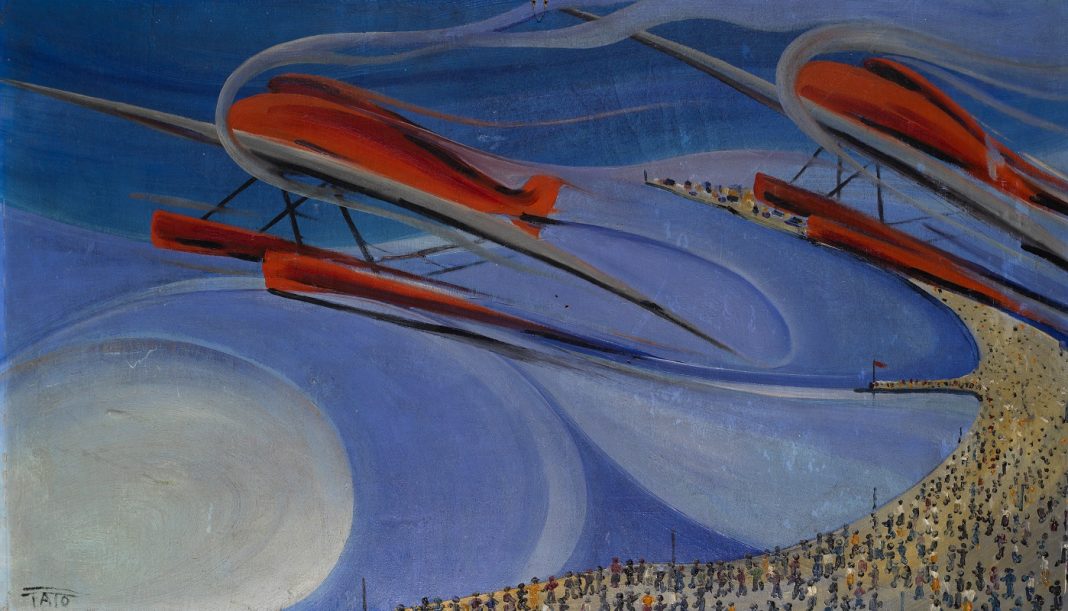It was 1912 and the whole world, shocked by the tragedy of the Titanic, was focused on the new huge machines that allowed you to reach the other side of the planet in reasonable times. The ’new’ continents were no longer the domain of explorers, as the Wright brothers defied the laws of gravity and FLIGHT became an actual and tangible reality, no more a myth of the brave Icarus.
In 1912, flight had already become a feature of the novels of Filippo Tommaso Marinetti (founder of the Italian Futurist movement), with literature moving from heroes on horseback to daring stories of escapes aboard a monoplane.
Futurism, an avant-garde 20th-century movement, celebrated flight as the highest expression of freedom of movement and dynamism, exalting speed and innovation in every field, from literature to poetry, painting, sculpture, music, even the ‘younger’ arts such as photography and cinema.
Aeropainting became the name for a style of painting in Italy, the main protagonists of which were Giacomo Balla, Tullio Crali, Sante Monachesi, Fortunato Depero, Gerardo Dottori and Fedele Azari, author of the work Prospettiva di Volo (In-Flight View), presented at the Venice Biennale in 1926. This modernity involved women too, great artists who played witness to change, such as Benedetta Cappa, Marisa Mori and Olga Biglieri. The latter was amongst the first female Italian aviators to get her pilot’s licence, when she was just sixteen!

From an aesthetic point of view, Futurist Aeropainting brought to life the speed and dynamism of flight, going beyond the Cubist outlook in its use of perspective and depiction of multiple planes at once.
Today, some of the most famous works of Aeropainting can be admired at the Gianni Caproni Museum of Aeronautics in Trento in northern Italy.





